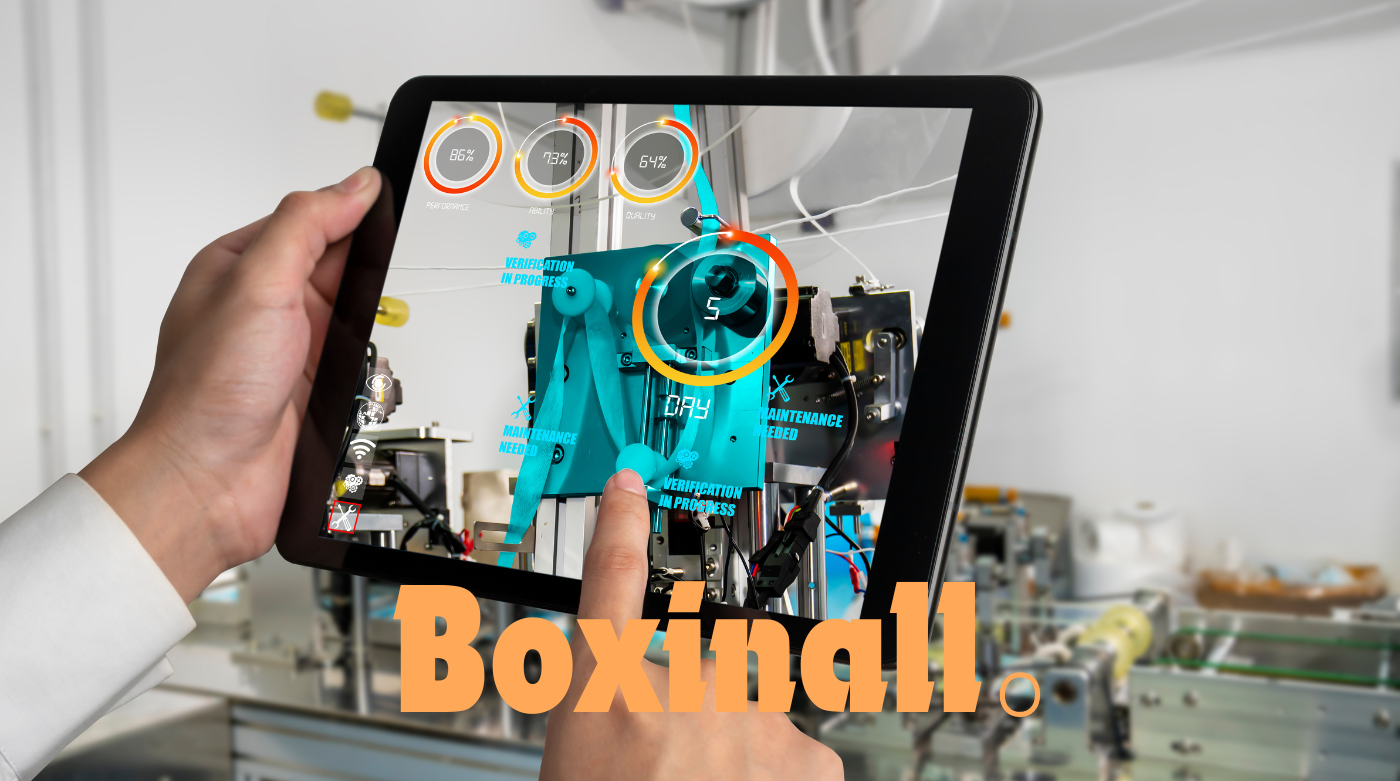Augmented Reality App Development is transforming the digital landscape, merging the physical and the virtual in ways that were once confined to the realm of science fiction. This innovative technology, often abbreviated as AR, allows developers and businesses to overlay digital information onto the real world, enhancing user experiences across various sectors. Its implications for app development are profound, presenting unique opportunities and challenges that necessitate a comprehensive understanding of both its potential and its pitfalls. As industries increasingly adopt AR/VR technologies, the demand for specialized Augmented Reality App Development continues to soar, marking it as a pivotal area of focus for developers and enterprises alike.
This article delves into the intricate world of Augmented Reality App Development, outlining the costs involved, the key features that distinguish successful AR apps, and the step-by-step process of bringing an augmented reality application to life. Moreover, it will explore the spectrum of industry use cases, showcasing the versatility and transformative power of augmented reality technology. Through this exploration, readers will gain insight into how app development, especially within the AR/VR sphere, is evolving and how companies like Boxinall Softech are at the forefront of pioneering these immersive experiences. By providing a roadmap from conception to launch, this guide aims to demystify the process of creating augmented reality apps, offering valuable information for anyone interested in venturing into this dynamic field.
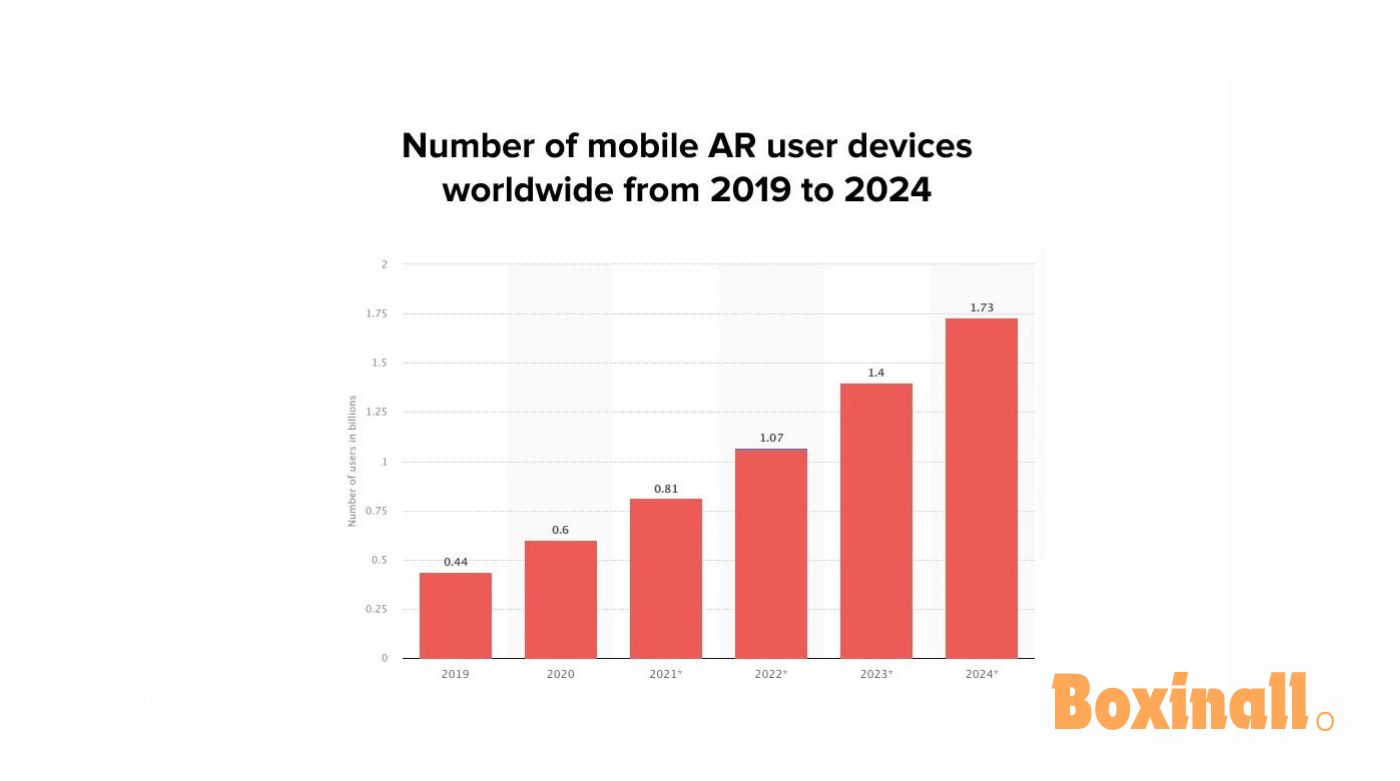
Understanding the Costs of Augmented Reality App Development
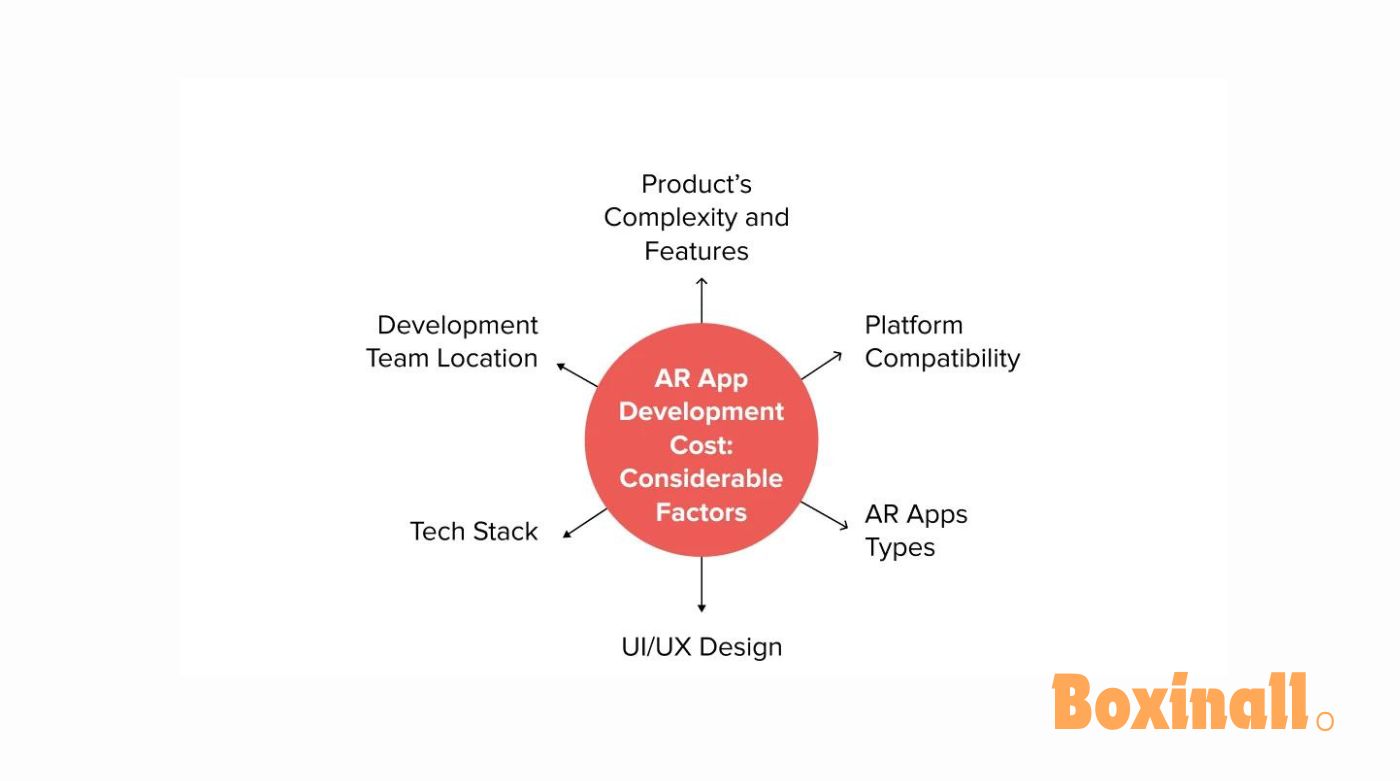
Product Complexity and Features
The complexity and functionalities of an augmented reality (AR) application significantly impact the overall development costs. Basic apps with simple functionalities like image recognition are generally less expensive, while advanced apps featuring 3D object recognition, real-time tracking, and interactive user interfaces require more time and investment to develop. Additionally, the type of AR—whether marker-based or markerless—affects the development timeline and cost. Marker-based AR apps are simpler and cheaper, whereas markerless apps, utilizing technologies like SLAM (Simultaneous Localization And Mapping), are more complex and costly due to their sophisticated software needs .
Platform Compatibility
Developing an AR app for multiple platforms, including iOS, Android, and Windows, can significantly increase costs. Each platform has unique requirements and guidelines that necessitate additional development efforts. For instance, an app that needs to function across all these platforms will require adaptations and testing to ensure compatibility, thereby raising the development expenses.
UI/UX Design
Investing in high-quality UI/UX design is crucial for enhancing user engagement and retention rates. A well-designed interface with compelling graphics and an intuitive navigation system not only attracts users but also adds to the development costs. Creating a visually appealing AR experience is essential but increases financial investment.
Development Team’s Location and Skill
The geographical location and expertise level of the AR development team directly influence the cost. For example, hourly rates for AR development vary widely from region to region—developers in North America may charge between $60 to $275 per hour, whereas those in India might charge between $10 to $120 per hour. Moreover, the complexity of the project and the required skill set of the developers also play a crucial role in determining the overall cost. More experienced developers or those specializing in advanced AR technologies may command higher rates, which can significantly affect the budget.
Understanding these factors provides a clearer picture of the financial commitments involved in augmented reality app development, enabling better budgeting and project planning.
Key Features of Augmented Reality Apps
Basic AR App Features
Augmented Reality (AR) app development incorporates a variety of features tailored to enhance user interaction and immersion in a digital environment. Basic features include image recognition, which allows apps to identify and process images from the real world, and object recognition and tracking, which enable apps to detect and follow the movement of objects. Additionally, surface detection helps apps understand and adapt to the geometry of the environment, providing a more realistic integration of digital objects into the physical world.
Location-based AR, another fundamental feature, uses geographic data to anchor digital content to specific real-world locations. This feature is particularly useful in navigation and informational applications, where context-specific data can be displayed. Moreover, motion tracking ensures that AR content responds to the movements of the user’s device, enhancing the interactive experience .
Advanced AR App Features
Advanced AR features leverage more sophisticated technology to deliver deeper engagement and functionality. The Depth API, for instance, utilizes powerful hardware like the LiDAR scanner on certain iOS devices to improve scene analysis and object occlusion, allowing digital objects to interact more realistically with their physical surroundings . Similarly, Apple’s Raycasting API enhances object placement capabilities, making it possible to position digital objects on complex surfaces with greater precision .
RoomPlan is another innovative feature that quickly generates a 3D plan of a room using the LiDAR scanner and AI processing. This technology is particularly beneficial for applications like AR measurement tools, significantly speeding up the development process and enhancing accuracy . Additionally, Cloud Anchors extend AR experiences to multiple users, allowing them to interact with the same virtual objects in a shared space, regardless of the platform they are using .
For more interactive and personalized experiences, ARCore’s ability to create detailed 3D models of users’ faces supports applications such as virtual try-ons and interactive filters, which are increasingly popular in retail and entertainment sectors . Moreover, the integration of AR in advertising, through features like AR business cards and posters, demonstrates the technology’s capacity to transform traditional marketing strategies into engaging, immersive experiences .
By incorporating these basic and advanced features, AR apps not only enhance user engagement but also open up new possibilities for application in various industries, from retail to real estate.
Step-by-Step Guide to Developing an Augmented Reality App
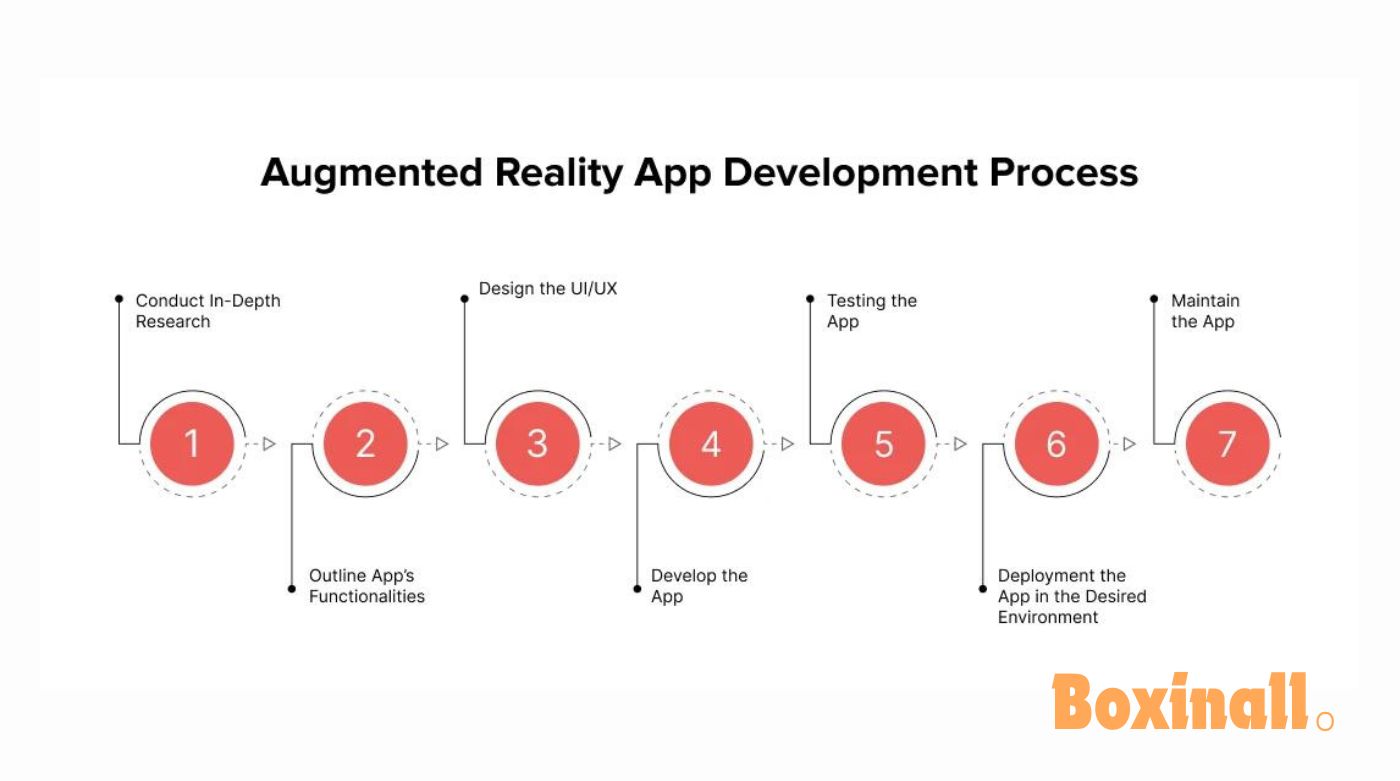
Conducting In-Depth Research
The initial phase in augmented reality app development involves thorough research to define the objectives and understand the target audience’s needs. This stage is crucial for determining the features and functionalities that the app will offer. Identifying the platform—whether iOS, Android, or cross-platform—is also vital as it influences the development approach and potential audience reach 6.
Designing the UI/UX
Following the research phase, the focus shifts to designing an engaging and intuitive user interface (UI) and user experience (UX). Storyboarding is employed to map out the user’s journey, ensuring a seamless interaction with the app. The design process also involves integrating elements that will interact with the real world and checking the navigation flow throughout the app. Employing 3D modeling and animation enhances the visual appeal and interaction, making the AR experience more immersive .
App Development Process
Choosing the right development tools and frameworks is critical to turn the conceptualized app into reality. Popular AR development frameworks like Unity or Unreal might be selected based on the app’s requirements. This stage includes integrating AR elements and coding to ensure that the app responds accurately to real-world environments. Backend development is also handled during this phase, focusing on server functionality, data handling, and content delivery .
Testing and Deployment
Before launching, the app undergoes rigorous testing to ensure it operates flawlessly across different devices and platforms. This includes functional testing, compatibility testing, performance testing, and user acceptance testing (UAT). Identifying and fixing any bugs is crucial to optimize the app’s performance and user experience. Once testing is complete, the app is ready for deployment .
Post-Launch Maintenance
After the app’s launch, continuous monitoring and maintenance are essential to address any user feedback or issues that arise. This phase ensures the app remains up-to-date with the latest AR technologies and user expectations. Regular updates and bug fixes are part of the maintenance to enhance the app’s functionality and prolong its lifecycle .
By following these detailed steps, developers can create a robust and engaging augmented reality app that meets the needs of their target audience and stands out in the competitive AR market.
Industry Use Cases for Augmented Reality Apps
Retail and eCommerce
Augmented Reality (AR) is transforming the retail sector by enhancing the shopping experience with interactive and personalized features. For instance, AR allows customers to visualize products in their own space before purchasing, which significantly reduces return rates . Major retailers like IKEa and Adidas have leveraged AR to enable customers to see how furniture or apparel looks in their environment or on them, thereby increasing buyer confidence and boosting sales .
Education
In the educational sector, AR has proven to be a powerful tool for enhancing learning and engagement. Google Expeditions uses AR to allow students to explore virtual environments and interact with 3D objects, making complex subjects more accessible and engaging . Additionally, AR applications can transform traditional classroom settings by enabling virtual field trips and interactive historical reconstructions, thus providing students with immersive learning experiences that are both informative and engaging .
Healthcare
AR technology is making significant inroads into healthcare by improving procedures and training. AccuVein’s AR vein visualization technology is a prime example, assisting healthcare professionals in locating veins accurately, which enhances the efficiency of medical procedures and improves patient outcomes . Furthermore, AR is utilized in medical training to simulate surgical procedures, providing real-time guidance and enhancing the precision and safety of surgeries .
Fashion and Beauty
The fashion and beauty industries are embracing AR to provide a more interactive shopping experience. AR try-on features enable customers to virtually try on various clothing items, accessories, and makeup, helping them make informed purchasing decisions from the comfort of their homes. This not only enhances customer satisfaction but also drives sales by reducing the uncertainty associated with online shopping.
Gaming
AR has revolutionized the gaming industry by creating immersive and interactive gaming environments that blend the real world with virtual elements. Pokémon GO is a standout example, engaging millions of players worldwide by allowing them to capture virtual creatures in real-world locations. This integration of AR with location-based gameplay has not only promoted physical activity but also introduced AR technology to a mainstream audience, expanding the possibilities for future AR-enhanced gaming experiences .
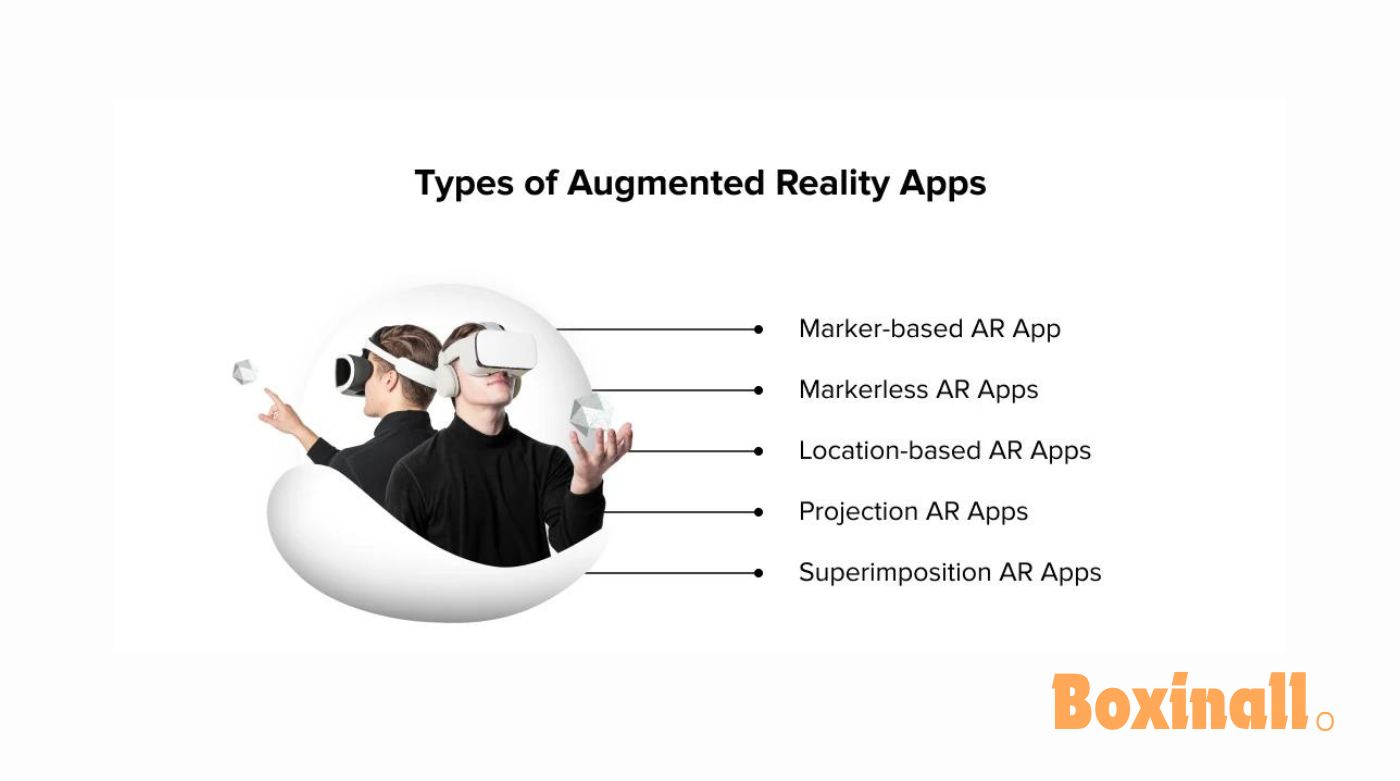
Conclusion
Throughout the exploration of Augmented Reality (AR) App Development, we have navigated through the complexities of costs, the critical features that set successful AR applications apart, and the meticulous steps involved in bringing an AR app from concept to launch. The discussion underscored the transformative power of AR technology across various sectors, from retail and healthcare to education and entertainment, revealing its capacity to enhance user experiences and interactions with the physical world. By highlighting the challenges and opportunities within AR app development, including financial considerations, platform compatibility, and the integration of advanced features for deeper engagement, this article serves as a foundational guide for developers and businesses eager to pioneer immersive experiences.
As we stand on the brink of a new era in digital innovation, the significance of AR in shaping future technological landscapes cannot be overstated. It beckons developers and industry leaders to continuously push the boundaries of what is possible, driving forward with the integration of AR in everyday applications and services. The journey through augmented reality app development, from understanding its costs to appreciating the intricate processes involved, emphasizes the importance of strategic planning, creativity, and technical excellence. Looking ahead, the invitation to explore further research and development in AR promises not only to enhance app functionality and user engagement but also to unlock new possibilities that will redefine our interaction with the digital and physical realms alike.
FAQs
1. What is the typical cost to develop an AR application? Developing an augmented reality (AR) app can vary in cost. Generally, the price ranges from $25,000 to $50,000, depending on the complexity and features included. A basic app with minimal features, also known as a minimum viable product (MVP), will cost less than a fully featured app.
2. What key features are integrated into an augmented reality app? Augmented reality apps incorporate three main features: a blend of digital and physical worlds, real-time interactions, and precise 3D recognition of both virtual and real objects.
3. How much does it cost to develop an AR game? The cost to build an augmented reality game typically starts around $37,500. However, depending on the scale and features of the game, the costs can range between $25,000 and $50,000.
4. How does augmented reality function? Augmented reality (AR) operates by overlaying digital information on real-world objects. This creates a 3D experience that enables users to interact with both the digital and physical elements seamlessly.

